This content was originally published by the Longmont Observer and is licensed under a Creative Commons license.
The Longmont Downtown Development Authority (LDDA) is sponsoring a magnificent downtown display of Altars and Gigantes prior to their Day of the Dead celebration on Saturday 2nd November. Some guided tours are available prior to then and visitors will be able to see altars created and displayed by many downtown businesses.
Lupita guided the first tour. She is a native of Oaxaca, Mexico, has lived in Longmont for over 20 years and teaches Spanish, as well as taking people to Mexico to experience the Day of the Dead celebrations. She told us that the altar (ofrenda) celebration for Central and South America families has had a long history and that the altars celebrate those who have gone before us – those of our ancestors who have died. Similar to the Buddhist tradition of creating an altar to an individual member of the family who has died, this is a more general memorial.
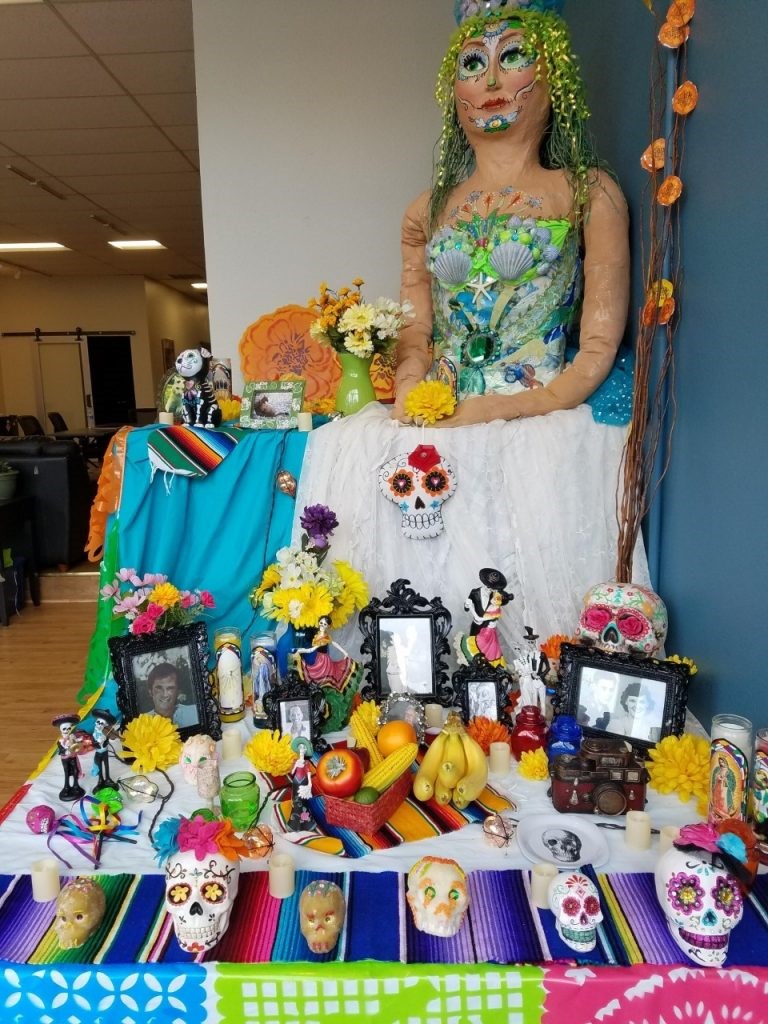
Many Main Street businesses have created altars in their window displays or inside. Each of them is very different, but each conforms in its own way to the traditions of the ofrenda. The LDDA offices have an altar in their front window that was created by several of their employees and commemorates family members that have passed away. It also includes a gigante puppet that will be part of the procession of papier mache gigantes on 2nd November in downtown.
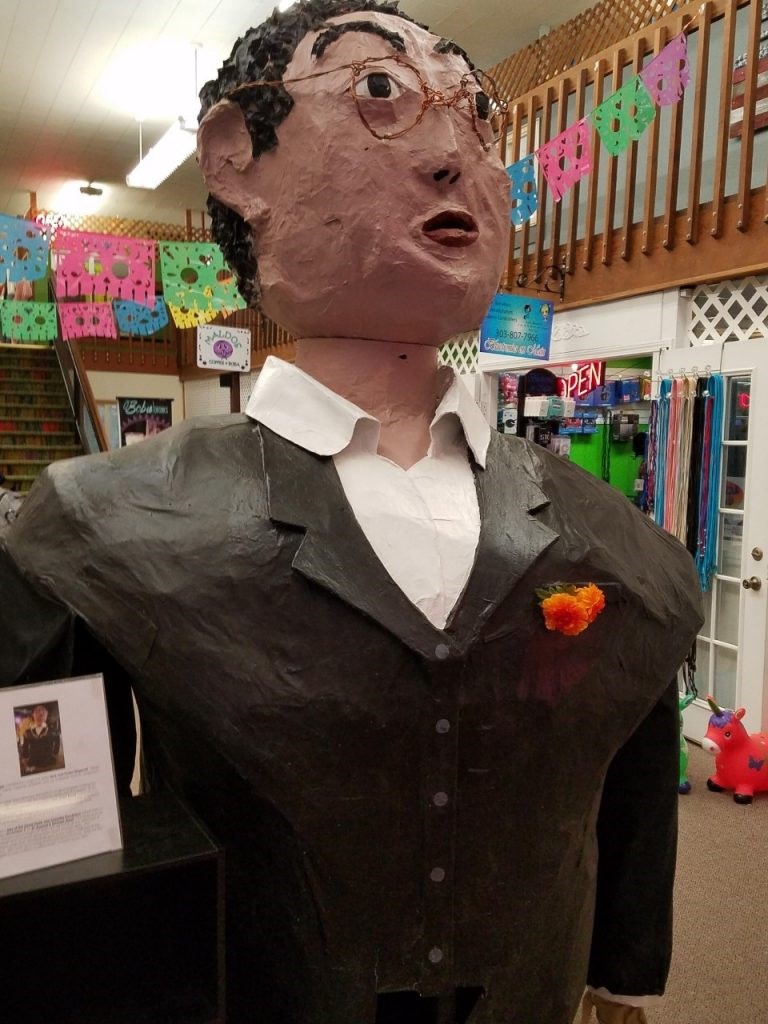
In addition to an altar created by one of the resident artists, the Old Town Marketplace in the 300 block of Main Street displays a male gigante, Diego, complete with a smart, black suit and red boutonniere. Created by Rick and Paula Fitzgerald it is now in Longmont’s collection.
Lupita explained that the different levels contained in each altar represent heaven, earth, and purgatory, with the most traditional ofrendas having 7-layers, representing all the necessary steps to rest in peace. In addition to the vertical levels of the altar, there should be inclusions of each of the four elements. Earth is represented by food, often bread of the dead – Pan de Muerto - while a glass or bottle of plain Water will also slake the thirst of the returning spirits. Fluttering paper banners (papel picado) represent the Air, and candles are lit to show the fourth element of Fire.
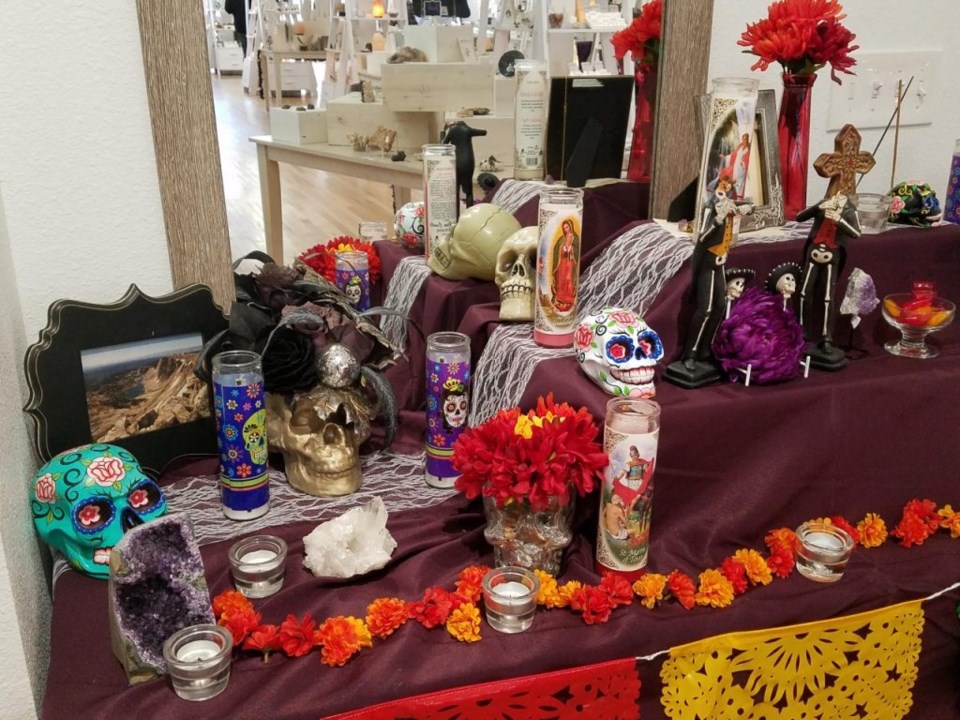
Crystal Joys recently moved to a larger location on Main Street, and their altar is in the rear of their new store in the 300 block. It is dedicated to St. Eligius who, in addition to being the patron saint of Jewelry Makers, is also patron of Goldsmiths, Blacksmiths, Horses, Taxi Drivers and Mechanics. This altar includes several artifacts related to the craft, as well as the traditional altar elements.
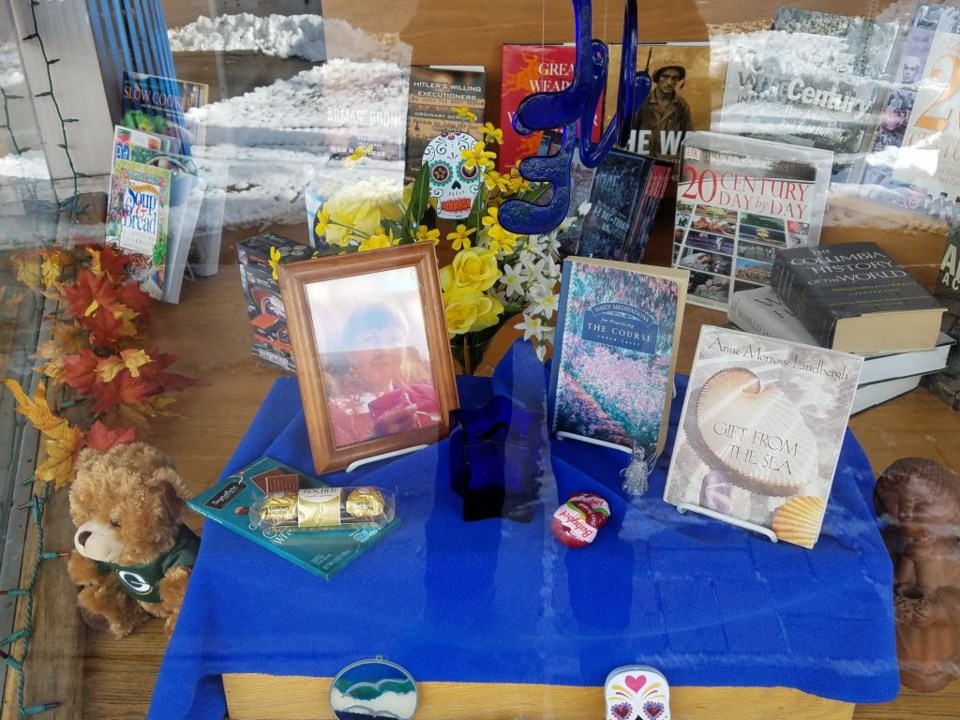
Several of the Main Street altars commemorate the founders or original owners of the businesses. The Used Book Emporium’s altar remembers Carol Grossman, the founder of the store, in 1996. Her daughters are carrying on her love of books.
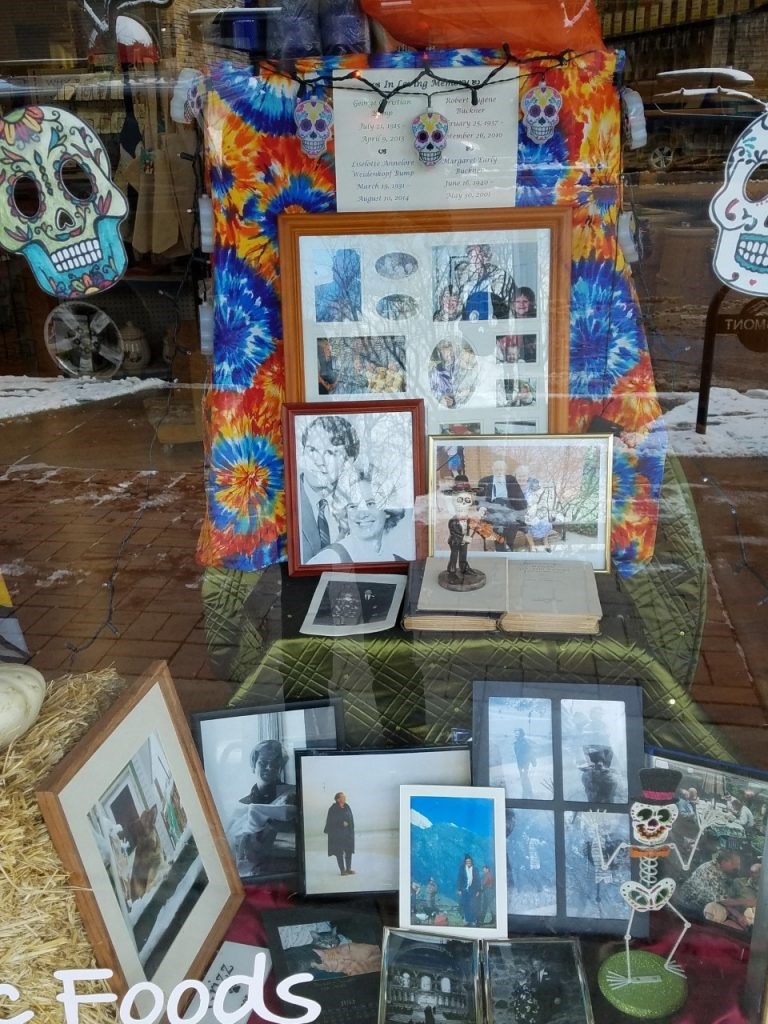
The Simply Bulk owner is another Main Street business whose altar remembers the deceased family members of the current owners. What a lovely way to perpetuate the line of families.
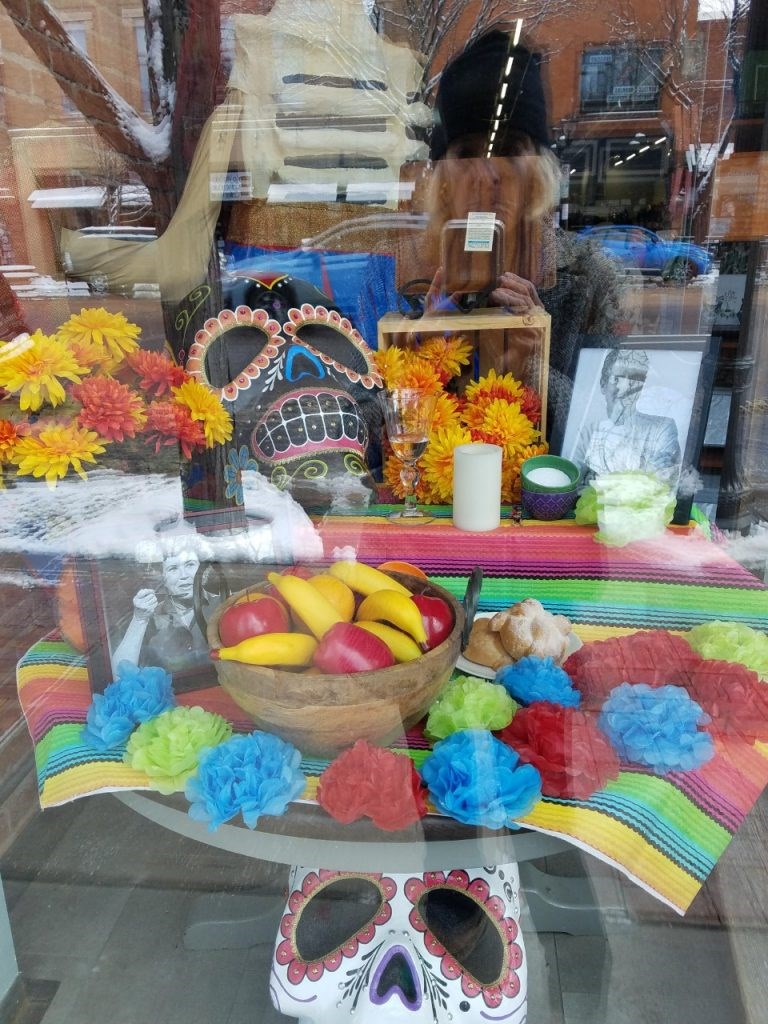
Commemorating inspirations instead of family, The Kitchen Company’s altar remembers two great American cooks – Julia Child and Anthony Bourdain. While the fresh fruit bowl included may not be as complex as the offerings of these culinary stars, the altar definitely includes all the necessary components, even marigolds.
Marigolds, or flowers in general, also represent the fragility of life. The marigold most commonly used in Dia de los Muertos celebrations is the Mexican marigold or Aztec marigold, otherwise known as the flower of the dead.
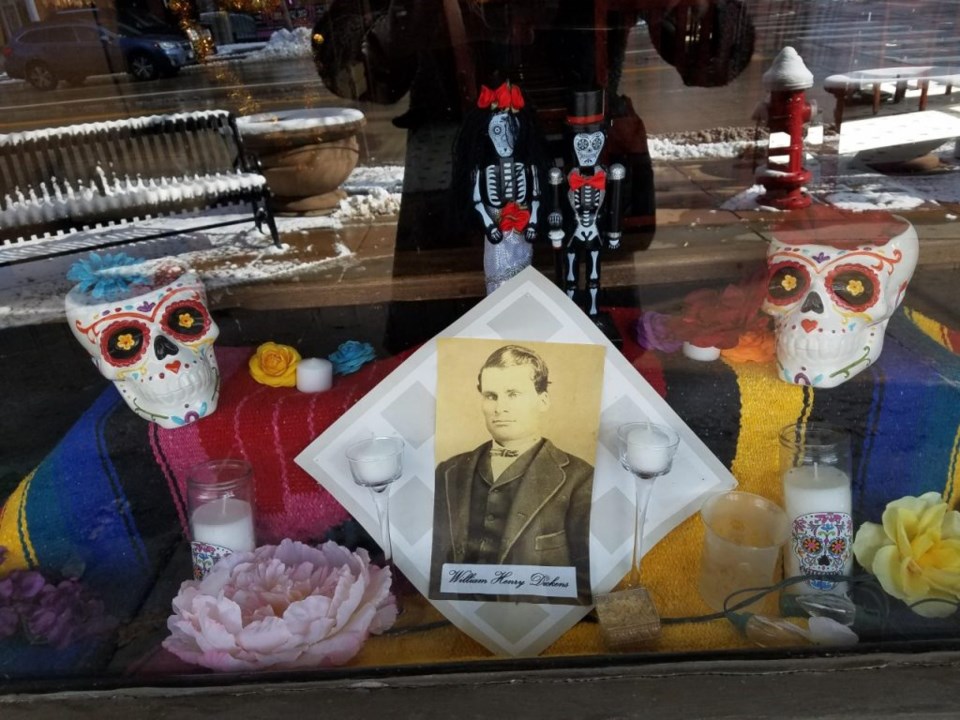
Going back even further in time, the Dickens Opera House on the corner of 3rd and Main has a very simple but impressive small altar that commemorates its founder, William Henry Dickens (a relative of the British author, Charles Dickens), who built the original structure in1881.
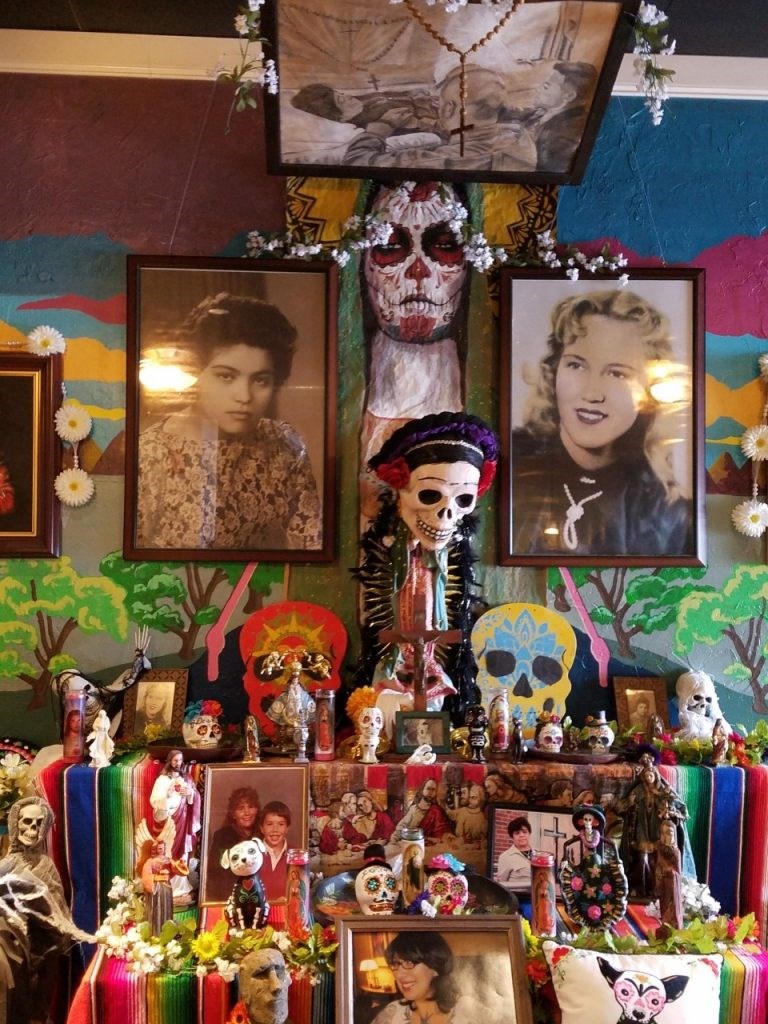
Perhaps the most impressive altar on Main Street can be seen through the front window of the LoCo Gastropub on the corner of 4th and Main. It has many layers and celebrates the life and ancestors of local Latino artists.
Longmont hosts the largest celebratiuon of the Dia de Los Muertos in Colorado and the celebration continues the weekend after the Halloween holiday, with the Family Fiesta on Saturday 2nd November at the intersection of 4th Avenue and Kimbark Street. The Longmont Museum is joining forces with the Firehouse Art Center, Longmont Downtown Development Authority, and El Comité de Longmont to bring the biggest and best Día de los Muertos celebration Longmont has ever seen—all held downtown! Live music and dancing, sugar-skull decorating, traditional food, altars, craft making, Catrina face painting, and so much more! There is also a free shuttle from the Museum to downtown.
Then there will be a procession of dozens of gigantes, traditional giant puppets made by local artists. It will depart from the Family Fiesta and walk through downtown Longmont, ending at the Dickens Opera House.
Not only is Longmont's Dia de los Muertos festivity the biggest in Colorado, but it is the best in ensuring all cultures feel welcome in celebrating life today and in the past, wherever we originate from.


